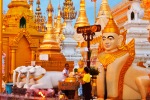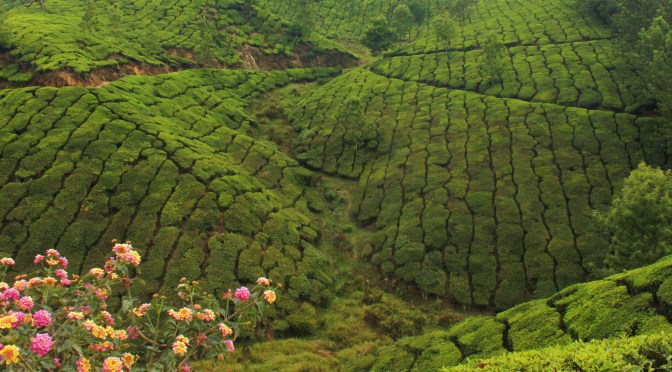Mika and I ended our summer with our third pilgrimage to Burning Man, and as always, I am having trouble encapsulating the experience in words. There were so many powerful and wonderful moments at this Burn that will stay with me that it’s hard to narrow it down to describe just a few of them. It’s particularly difficult to express them to those that have never been before, and can only get an idea of the setting from photos or stories. After our first year I tried to give an overview of the magic in a blog post, which you can check out here for a primer.
This was the second year that we were able to enter Black Rock City early with a group of our Portland friends to help construct our camp’s saloon, offering free booze and entertainment in the form of fire shows, acrobatics, and (new and very popular this year) suspension rope bondage demonstrations. We got to bond with the early arrival crew and see the city rise up around us, which is something I have come to cherish. It also allowed us to be cozily set up before the torrential rains temporarily shut down the gate hours after it opened to the general public.
Some of the new burners that did make it in before rainpocalypse 2014 struck were Karel and Marie, Mika’s father and stepmother from Alaska. Burning Man Is a multigenerational event, and her parents fit right in. Karel, a welder and artist, even brought some of his own creations, including a spiked metal headdress for Mika that I wrapped in kevlar wicking so that she could have a fire mohawk of awesomeness (there’s a picture lower down on the page) while she fire-dances. Hanging out with Mika’s family and introducing them to the city was definitely a highlight of this year’s Burn!
There was lots of time spent with friends as well. Early in the week, we got to witness Jeremy and Rachel’s beautiful wedding, made all the more touching by the most badass of first dances in wedding history as the newlyweds spun a flaming dragon staff between them. Completely by accident, we also stumbled across the wedding of our friend Adam, taking place at sunset at the entrance to the Temple. We spent some time with our friend Robyn, who is heavily involved with charity work in Nepal and gave us prayer flags blessed by the Dalai Lama and beads that belonged to an elderly Tibetan monk that she had directed us to meet during our travels abroad. We reunited with Maxine and Diana, awesome and adventurous ladies that we met while backpacking in Nepal and Thailand, as well as my old friend West from Montana. Even more so than in previous years, we made new friends with strangers that we look forward to reconnecting with as we transition back in the “default world.”
The precept of gifting in various forms is another important part of Burning Man, a city that forbids the formal exchange of money. Mika gave beautiful necklaces to many of these old and new friends. Each one had a stone pendant that was a shard of a huge basalt altar from last year’s Temple that she had collected and wire-wrapped herself. Gifting pieces of something that was so incredibly meaningful and significant to the entire community as a whole was really special.
We danced all day and night around the city, catching great sets from familiar artists along with plenty we’d never heard of. Desert Dwellers, Polish Ambassador, Tycho, Kyrstyn Pixton, Dixon’s Violin, Infected Mushroom, Prrisma, and Cosmic Selector were a few highlights, but much of the time we had no idea who was playing and simply enjoyed the vast sonic landscape. Electronic music is a huge part of Burning Man, but live music has its place too and we even caught our friend Rex’s Irish jam session. We spent the whole week surrounded by awesome music, and are now busy updating our music library accordingly.
The large and small art installations are one of the event’s biggest draws, and this year didn’t disappoint (does it ever?). By far the most conspicuous was “Embrace,” a 72-foot wooden sculpture of two figures holding each other. As with much of the large-scale wooden art, it was ceremoniously burned late in the week. This took place at sunrise, the morning after my annual mid-Burning Man birthday extravaganza, and we were unexpectedly interviewed by a Korean news crew immediately afterwards; we may be immortalized there as the ragged, dusty, inarticulate hippies that we were that morning. Another big piece put to the flame was the “Alien Siege Machine,” a ferocious, blood-drenched tower stylized to look like a massive, mechanical version of H.R. Giger’s monster. The crew responsible for burning it staged a pyrotechnic battle first, complete with shooting fireworks at it from surrounding art cars. Other favorite art installations included “Wheels of Zoroaster,” two huge round metal cages filled with flaming wood and laboriously spun with hand cranks to send sparks showering out over the playa, and a man-made rainbow created with a revolving prism and ultra-powerful spotlight. Mutant vehicles are another beloved part of the Burn, as they showcase incredible creativity and ingenuity and provide some of the best entertainment out there. Ranging from little tricked-out golf carts to massive double-decker articulated buses, most have massive sound systems, onboard bars, and the ability to shoot fire. Shouldn’t all cars be like that?
The art cars gather for the burning of the eponymous Man, forming a circle around him that fills in with cheering participants. Before he is ignited in spectacular pyrotechnic fashion, Black Rock City’s finest fire spinning conclaves perform their choreographed dances and routines. Our theme camp is home to one such group, so we sat front and center while our friends wowed the onlookers. Mika and I had many chances to spin fire over the week, an activity that we find ourselves getting more and more passionate about. We have nothing on the Garnish Fire Conclave, though—all 35 of them with matching uniforms and all manner of fire props put on some of the best choreography we’ve seen, yet again. And when the 105-foot-tall Man finally burned (and burned, and burned…he really didn’t want to fall down easily this year), we screamed our heads off with the rest. We came back to his smoldering ashes the next morning to check it out, and found people cooking fresh coffee and bacon on them, as well as a whole lamb being grilled on a spit, hacked up, and given out freely. On top of that, our friends Jorgen and Jared had wheeled out their mobile bar and were serving fruity alcoholic drinks while a DJ in a giraffe costume played funky, good-vibe party music. I bartended with them for what became some of the most memorable and fun hours of the whole week, which will hopefully become an annual tradition.
Of course, not everything about the Burn is fun and games—it is also a place of immense emotional release and catharsis. We spent a significant portion of the week with our very close friends Erika, Kelly, and Andy as we all processed a tragic and personal loss. Placing tributes to loved ones at the Temple of Grace has become one of the most powerful traditions of the burner community, and we made one together to send off a very dear soul no longer with us. The shared outpouring of grief for so many that have passed away is a tangible, overwhelming sensation there, and brings out an emotional side of me that doesn’t see the outside world often. Burning the Temple at the very end of the week brings a greater sense of shared anguish and healing than anything else I’ve ever experienced.
Each Burn has been different, but amazing in its own indescribable way. Every year, I leave feeling revitalized and excited, more connected with myself and Mika and my community, full of joy and happy memories, and like I have let go of some of the stresses and pains of everyday life. Calling it a magical and unique place is not an empty platitude—there really is nowhere in the world like it, and I’ll continue to go as long as I’m able. I cherish the experience, and can’t wait for more. The Man burns in 346 days.
Note: If you’ve got a little more time and want to see more of our photos from the Burn, see the full Facebook album here.


























































































